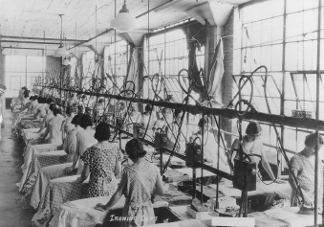KETTERINGHAM, GEORGE H. (11 Feb. 1876-29 Dec. 1954) was a developer of technical instruments manufactured by Cleveland industry. His innovations included the harvesting of spider web for use as cross hairs in optical equipment and perfection of electro-pezioid crystal for electrical devices.
Ketteringham was born in Crowland, England, and came to Cleveland with his family in 1881. On 11 Aug. 1905, he was married to Rose L. Wise. They had twin girls, Rose and Ruth.
Ketteringham began his career as an apprentice at the J.C. Ulmer Co. in 1896. There he became an expert in the manufacturing of surveying and other precision instruments. During WORLD WAR I, Ketteringham played a major role in the development of periscopes used in submarine warfare. His technical knowledge also led to special projects with Dr. George Crile, founder of the CLEVELAND CLINIC FOUNDATION, who requested assistance with the development of surgical tools.
During construction projects such as the DETROIT-SUPERIOR BRIDGE, the HOPE MEMORIAL BRIDGE (Lorain-Carnegie), BURTON MEMORIAL BRIDGE (Main Ave.), and the TERMINAL TOWER complex, Ketteringham was often called upon to make immediate repairs to surveying equipment. An interest in construction led to his photographing of many buildings and other civic improvements. These photos are part of the George H. Ketteringham Collection housed at the CLEVELAND PUBLIC LIBRARY.
In 1933, Ketteringham joined the Bonnar-Vawter Fanform Co. His mechanical expertise was utilized for the care and maintenance of large-scale printing presses.
At the start of WORLD WAR II, Ketteringham joined the BRUSH DEVELOPMENT CORP. He was a member of several research and development projects charged with harnessing the use of electro-pezioid crystals and the production of underwater sonar, electrocardiograph devices, and the modern dictograph machine. He remained associated with Brush until his death in 1954.
In April, 1993, the Smithsonian Institute accepted Ruth Ketteringham's submission of her father's professional papers, spider web harvesting tools and webbing samples to their permanent collection.
View Road, adjacent to the Metrohealth Medical Hospital, was dedicated as Ketteringham Drive in honor of George on 10 Sept. 1993. It was the longtime site of the family residence.
Last Modified: 03 Sep 2003 12:31:36 PM- Related Article(s)









